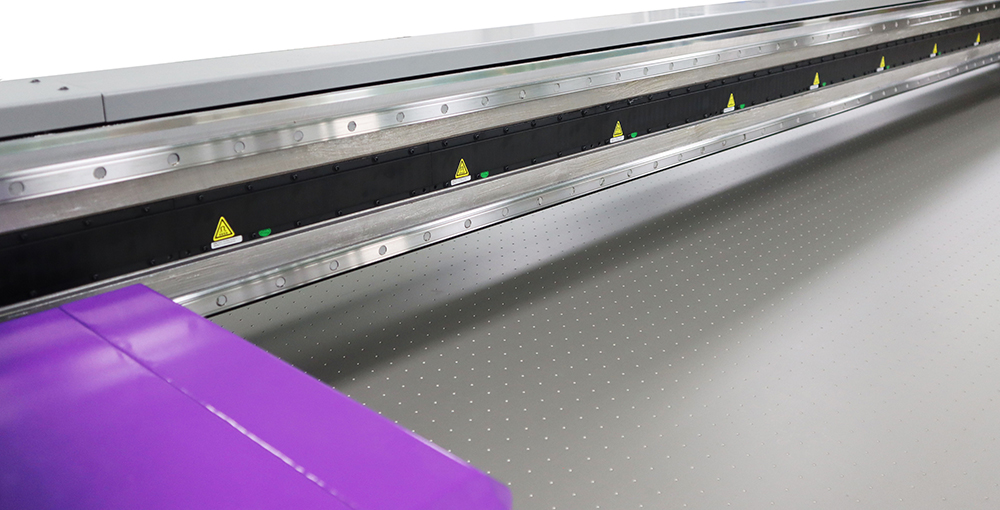UV Flatbed Printer: Troubleshooting Common Issues
In the realm of digital printing, UV flatbed printers have emerged as a game-changer, offering unparalleled versatility and efficiency in producing high-quality prints on a wide array of substrates. From rigid materials like wood, metal, and glass to flexible options such as vinyl and fabric, these printers have transformed the way businesses approach customization and mass production. However, like any sophisticated machinery, UV flatbed printers are not immune to technical hiccups. This blog post aims to demystify common issues encountered with UV flatbed printers and provides practical solutions to keep your printing operations running smoothly.

Understanding the Basics of UV Flatbed Printing
Before diving into troubleshooting, it’s essential to grasp the fundamental workings of a UV flatbed printer. These printers utilize ultraviolet light to cure (or harden) ink as it’s deposited onto the substrate. This process allows for instant drying, enabling faster production times and the ability to print on non-porous materials. The printer consists of several key components, including the print head, UV lamps, ink delivery system, and a sophisticated control software that orchestrates the entire printing process.
Addressing Print Quality Problems
One of the most frequent complaints among UV flatbed printer users is poor print quality. This can manifest as banding, streaks, or uneven color reproduction. Several factors could be at play here. Firstly, ensure that the print head is clean and free from clogs. Regular maintenance, including automated cleaning cycles and manual inspection, can prevent this issue. Additionally, check the alignment of the print heads; misalignment can lead to inconsistent ink placement. Most printers offer a calibration feature to adjust this. Lastly, consider the quality of the ink being used. Using low-quality or expired ink can compromise print quality.
Resolving Ink System Issues
Ink-related problems are another common headache. Issues such as ink not flowing properly, air bubbles in the ink lines, or ink drying prematurely can disrupt the printing process. To tackle these, start by inspecting the ink supply system for any leaks or blockages. Ensure that the ink filters are clean and replace them if necessary. Air bubbles can be eliminated by performing a manual purge of the ink lines, a process often outlined in the printer’s manual. For ink drying too quickly, adjust the printer’s settings to reduce the curing intensity or increase the humidity around the printer, as dry air can accelerate ink drying.
Dealing with UV Lamp Failures
The UV lamps are crucial for the curing process, and their failure can bring printing to a halt. If you notice prints not drying properly or the printer displaying error messages related to the UV lamps, it’s time to investigate. Begin by checking the lamp’s connection and ensuring it’s securely plugged in. Clean the lamp and reflectors to remove any dust or debris that might be blocking the UV light. If the lamp appears physically damaged or has reached the end of its lifespan (usually indicated by a decrease in brightness or frequent errors), it will need to be replaced. Always refer to the manufacturer’s guidelines for lamp replacement and disposal.
Managing Substrate Handling Challenges
Substrate handling issues can also lead to printing problems. Misalignment, warping, or the substrate not adhering correctly to the bed can all affect print quality. Ensure that the substrate is properly loaded onto the printer bed, using any available alignment tools or guides. For materials that tend to warp, consider using a vacuum bed or adhesive sprays to improve adhesion. Additionally, check the printer’s bed leveling; an uneven bed can cause the print head to be too close or too far from the substrate, leading to poor print quality.
Navigating Software and Connectivity Problems
In today’s digital age, software and connectivity issues are almost inevitable. Problems with the printer’s control software, such as crashes, slow response times, or difficulty connecting to the printer, can disrupt workflow. Start by ensuring that your computer meets the software’s system requirements and that all drivers are up to date. Restarting both the computer and the printer can often resolve temporary glitches. If connectivity issues persist, check the network cables or USB connections, or try using a different port or cable. For software-specific problems, consult the user manual or reach out to the manufacturer’s technical support for assistance.
Preventive Maintenance: The Key to Longevity
While troubleshooting is crucial for resolving immediate issues, preventive maintenance is equally important for ensuring the longevity and optimal performance of your UV flatbed printer. Establish a regular maintenance schedule that includes cleaning the printer, inspecting and replacing wearable parts, and updating software and firmware. Training operators on proper handling and maintenance procedures can also significantly reduce the likelihood of encountering problems. Remember, a well-maintained printer is a happy printer—and a happy printer means fewer headaches and more productive printing days.
In conclusion, UV flatbed printers are powerful tools that can revolutionize your printing operations, but they do require careful attention and maintenance. By understanding the common issues that can arise and knowing how to troubleshoot them, you can keep your printer running smoothly and efficiently. Regular preventive maintenance, combined with prompt attention to any problems that do occur, will ensure that your UV flatbed printer continues to deliver high-quality prints, meeting your business’s needs and exceeding your customers’ expectations.
